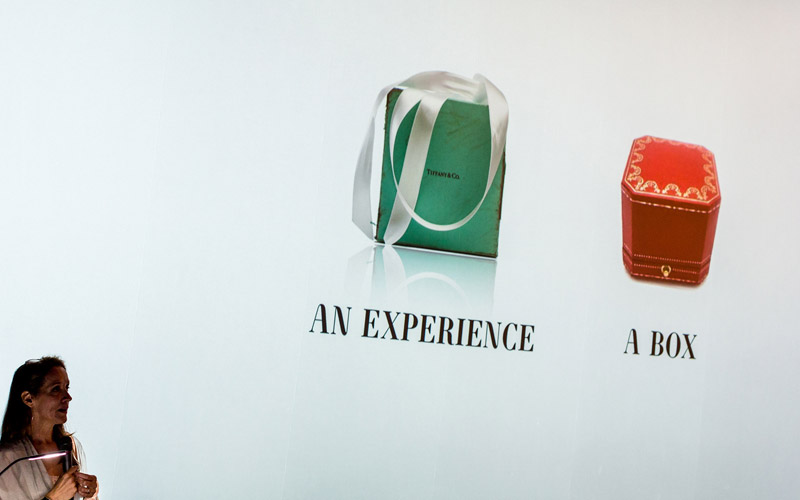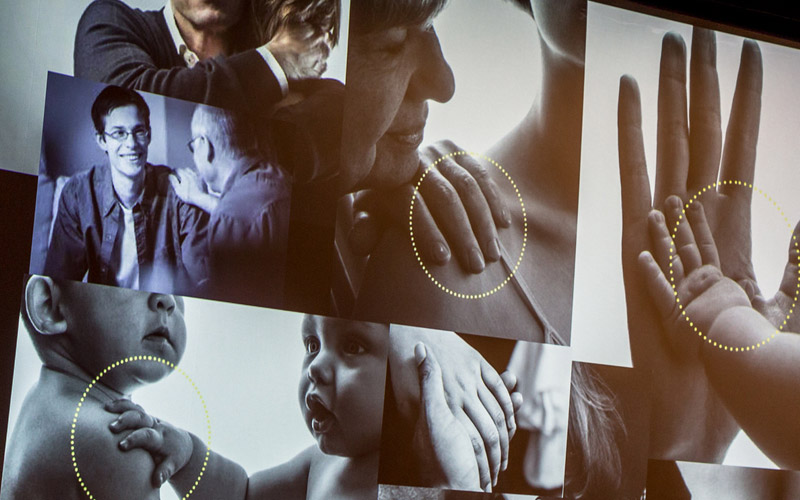Lana Rigsby and Dr. David Eagleman brought to you by Langrand and Company.

Back when I was a college student studying psychology at the University of Houston, I had dreams of one day becoming a neuroscientist. I remember going to the book store, picking up Dr. David Eagleman’s Incognito and finding myself enamored with the human brain.
Fast forward a few years and I’m still obsessed with the way we think, feel, make decisions and perceive the world around us. I’m not a neuroscientist, but I do work with the Black Sheep Agency, a marketing and strategic brand shop. And while we don’t study the human brain, we do focus on what people care about most, what engages them and the best way to make an impact.
So, naturally, when I noticed Dr. Eagleman was giving a talk with Lana Rigsby titled “Haptic Brain, Haptic Brands,” I couldn’t wait to nerd out and hear them discuss the intersections of design, communication and neuroscience.
I was hooked from the beginning of the event, when Rigsby recalled a family story about the iconic, little blue jewelry box from Tiffany & Co.

“You can’t buy it,” Rigsby said, “It must be given to you.” That blue box with a promise of forever inside is a memory no one will forget, and the box, while representing the Tiffany brand, also encapsulates all the feelings and memories associated with one moment in time. The box is put in one’s hand, the lid is lifted, and the ring inside is taken out and placed on a finger, where it will sit for many years. The box, too, will be kept as a sentimental memento.
This story left me wondering, how can a brand identity or product evoke so many memories and emotions? And why is touch so important?
What most of us already know deep down and a point that was reinforced at the event is this: We are driven by touch.
We’ve always communicated through touch, from the excited embrace of a friend you haven’t seen in years to the soft caress of a cheek to brush away someone’s tears. We have what seems like infinite ways to perceive and sense touch, and that’s because our largest organ, our skin, is covered in tiny receptors (roughly 5 million of them)! The skin on our finger tips is one of the most complex areas, being able to distinguish all the nuances and slight changes of our surroundings while providing us all kinds of information about temperature, weight, texture, shape, and anything else you can think of. Even our language, as Dr. Eagleman pointed out, is influenced by touch. We say things like, “She had a warm personality,” or “That was a heavy movie,” which helps us describe our feelings and sensations to others.

A particularly interesting facet of touch Dr. Eagleman discussed pertained to paper. Two studies, one in Norway and one in Sweden, both showed that reading comprehension was higher when participants read on physical paper over reading on a screen. The way we interact with the words on the paper allows us to remember and understand what we are reading more than what we read on a tablet.
Beyond that, the medium through which a message is presented is even more important. In his own study, Dr. Eagleman found that the quality of paper can unconsciously impact our feelings about a brand. When participants read about an entirely made up company on high quality paper, they thought more highly of it compared to a company presented on low quality paper or online.
The first impression someone has of a brand, along with how much they trust that brand, how likely they are to recommend it to someone else and the perceived integrity of the brand was much higher if the brand was presented on high quality paper over the other mediums.
This is all so fascinating to me because we don’t actively think about how a brand or message feels to us in different mediums or why we associate certain feelings to certain products. This is so important, especially today, where everything is literally a touch away. We can swipe left or right to order groceries, pay our bills, buy clothes and even meet a mate. So much of what we touch throughout the day involves pinching, swiping and other small, deliberate finger movements across a glass screen.

After attending this discussion, I’ll be sure to think more deeply, both professionally and personally, about how touch influences the way I communicate with the world around me. If you’re a communicator, creative, designer, or a person who generally feels things, you should think about it, too.
Dr. Eagleman published a short, interactive book to delve even deeper into the neuroscience of touch. You can check it out here. http://www.na.sappi.com/education/probookshelf/neuroscience;jsessionid=KFkJK1tEZSiZGENEHnlEjA__.node2
Laila Khalili is a Junior Brand Manager at the Black Sheep Agency, where she gets to work with the best of Houston every day. She’s a freelance writer, community organizer and lover of learning.
View all the photos from this event on Flickr
Photos courtesy of Alex Barber, 2015
http://visibleinlight.com